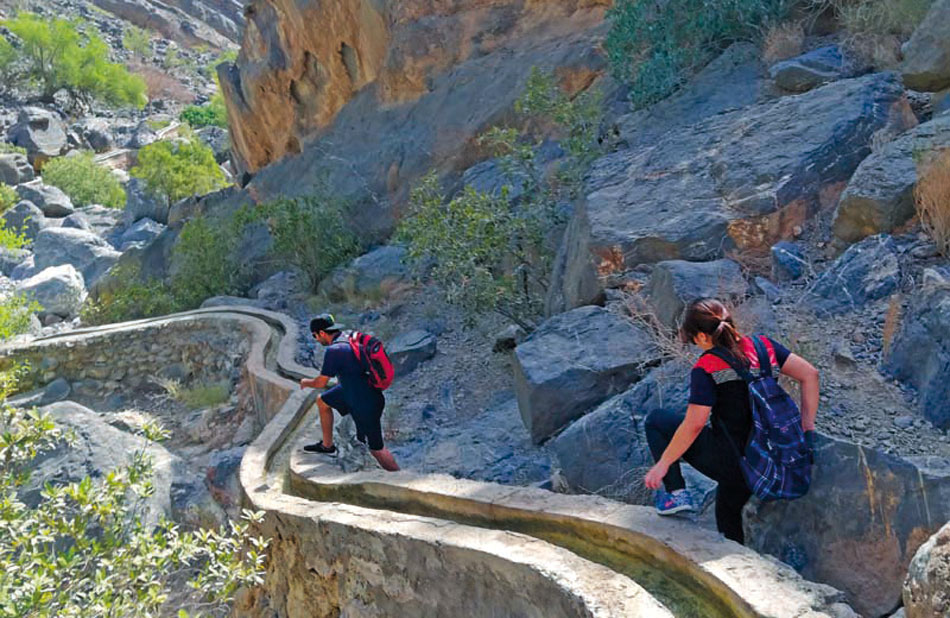

In almost every village, town and city in Oman, you’ll find a long deep path of water running through houses, streets and farms. These are ancient water channels, the aflaj irrigation systems that are commonly seen around both ancient and present-day Sultanate.
Falaj (or Aflaj for plural term) have been around in the region since 500 AD and in many parts can be dated back to over 5000 years ago. The word falaj literally translates to “spilt into parts” and this efficient form of water distribution is what made the arid regions of the middle east habitable, making use of the natural forces of gravity.
An original Omani irrigation system, it deeply connects the country’s heritage, culture and history.
How does a falaj work?

Sourcing its water from underground sources like wells and wadis, the falaj system doesn’t use pumps or complicated machines to extract the water but purely depends on the gravitational force and the natural properties of water. These ancient yet high scientific methods ensured that the supply of water was controlled and was shared amongst its users fairly, without affecting the natural water resources negatively.
With rains being sporadic throughout the country, the falaj system ensures that its inhabitants have access to clean usable water all throughout the year.
What DOES A Falaj system consist OF?
A falaj consists of three main parts; Um al Falaj, access shafts and the tunnels.
Um Falaj that translates to mother well, is the main source of the water. The water at this point has the purest quality. From here, tunnels transport the water to the different towns and villages that they were built for. The length and type of tunnel depend on the terrain of the land and the source of the water and its pressure.
Access shafts are built approximately every 20 metres along the tunnel to keep the water ventilated and remove impurities and debris that it may have collected. There is a ring of burnt clay at the shaft mouth, which has two main functions; to prevent the destruction of the falaj if the tunnel collapses, and to prevent flooding water from entering the falaj. These covered rings also protect water from pollutants and prevent people and animals from falling in the falaj.
Types of Falaj systems

There are three main types of aflaj in Oman depending on the type of groundwater they provide.
Dawoodi falaj is a long underground channel that can be tens of metres deep and can run for several kilometres, which keeps the water constant around the year.
Ghaili falaj is usually between 3-4 metres (10-13 feet) deep and gets its water from ponds and running water. It floods when it rains heavily and dries when it doesn’t rain for a long time.
Ainy falaj gets its name from the Arabic word ‘ain‘, meaning ‘well’.The importance of the ainy falaj depends on the type of water it has. It can carry hot or cold water, fresh drinking water or saline water or alkaline water mixed with valley water.
Watchtowers
Numerous watchtowers were also built along these waterways to defend the water systems form a part of the site reflecting the historic dependence of communities on the aflaj system. The fair and effective management and sharing of water in villages and towns are still underpinned by mutual dependence and communal values and guided by astronomical observation.
In 2006, five aflaj systems from the Sultanate were added to the Unesco list of World Heritage Sites — Falaj Al Khatmeen, Falaj Al Malki, Falaj Daris, Falaj Al Mayassar and Falaj Al Jeela.
TITASH CHAKRABORTY
Oman Observer is now on the WhatsApp channel. Click here



